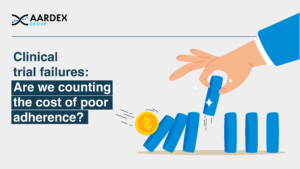Digital health technologies (DHT), including digital medication adherence monitoring, have the potential to revolutionize drug development, and must be given every opportunity to succeed.
That’s according to the European Federation of Pharmaceutical Industries and Associations (EFPIA) reflection paper, which has called for greater clarity and harmonization around how digital solutions fit into the regulatory pathway.
“The evolution of DHTs in the development of new medicines has the potential to advance research in healthcare, facilitate patient-centered drug development, and increase the value proposition of medicinal products. Ultimately, the increased use of DHTs will help to improve patient care,” said the authors.
However, they also said that the “current complexity of the regulatory pathways for DHTs in the EU”, was restricting the use and development of tools in clinical studies and alongside medicinal products.
“(Developers) must find their way through different regulatory pathways with different authorities that are not well connected and may have different requirements,” the paper said.
Challenges of Modern Drug Development
DHTs can help advance early-stage research and support evidence generation for regulatory assessment, meaning they hold huge potential for accelerating the development of safe, effective, patient-centered medicines, said the paper.
“(They) offer the potential of more granular, objective and clinically meaningful data on the effectiveness of a medicine, can solve unmet measurement needs in specific conditions, and allow (sponsors and CROs) to monitor patient treatment adherence in real-time,” it went on.
Digital solutions are enabling the current trend in trials to facilitate patient inclusion and reduce burden (e.g. less site visits) by facilitating the remote continuous monitoring of clinically relevant parameters and supporting clinical trial enrolment. They are also, the paper says, enabling sponsors and CROs to track medicine- taking behavior.
Poor treatment adherence, which can result in underestimations of drug efficacy, safety concerns, and drain study power to the point of study failure, is a challenge the industry has been struggling with for decades. A large part of the problem has been a lack of practical solutions, with methods like self-report or pill count being vulnerable to bias and providing only a snapshot of medicine taking behavior.
DHTs are changing that. At AARDEX Group, for example, we combine the power of medication adherence packaging and devices with centralized analytics to create a holistic system of monitoring and support throughout clinical trials and beyond.
The packaging, whether that be a pre-filled syringe or blister pack, automatically collects doing information and shares it with our Cloud-based medication adherence software. This uses proprietary algorithms to identify and flag risky medicine-taking behavior to study teams, enabling them to offer individualized support to those patients who need it.
Regulatory Hurdles
Despite the potential, the industry faces challenges in understanding how DHTs such as digital adherence medication adherence monitoring fit into regulatory workflows.
The EFPIA paper explains that there are two ways for developers to approach this question, depending on how they intend to use the DHT and its data post-approval.
According to the EMA, any technology that does not have a medical purpose, such as a remote monitoring app not intended for treatment, diagnosis, mitigation, or prevention, for example, does not fall into the category of a medical device.
“If the intended purpose of the DHT is only to assist in the development of the drug or support the patient journey throughout the trial, it does not meet the criteria to qualify as a medical device as per the MDR,” said the paper.
Providing it has no impact on the product’s benefit/risk evaluation, then, its use should have no impact of the future Marketing Authorization Application, and digital adherence monitoring can be provided in clinical practice as a consumer-grade service with no specific medical claim.
Increasingly though, sponsors want to look at co-labelling their products with the claim of “improved adherence”, which is where information is lacking.
Market Distinction
Adherence in clinical practice is a major challenge to drug efficacy and patient outcomes. The World Health Organization has estimated that up to half of all people with long-term conditions do not take their medicine as prescribed.1 The result is avoidable, expensive to treat complications, and even increased mortality.
Being able to demonstrate that a new drug can drive up adherence rates, then, could prove a real competitive advantage at product launch. But there are challenges to this.
“The concept of generating claims for the concomitant use of DHT and medicinal products is a new area of regulatory science,” said the EFPIA paper, adding that the “methodologies best suited to substantiate such claims are yet to be defined”.
More detailed guidance and multidisciplinary expert exchange platforms are required, it went on.
“Specifically, guidance should address what data would be required to support statement in the labelling on the compatibility and the clinical relevance (e.g., improving adherence) to be included in the medicine and its companion device labels i.e., Product information/Patient leaflet and Instructions for Use,” it said.
“It will be important to develop collaborative platforms with technology companies, regulators, notified bodies, sponsors, academic investigators, and patients as key stakeholders of the development and validation of novel digital endpoint.”
References:
- Sabaté, E., & Sabaté, E. (Eds.). (2003). Adherence to long-term therapies: evidence for action. World Health Organization.



